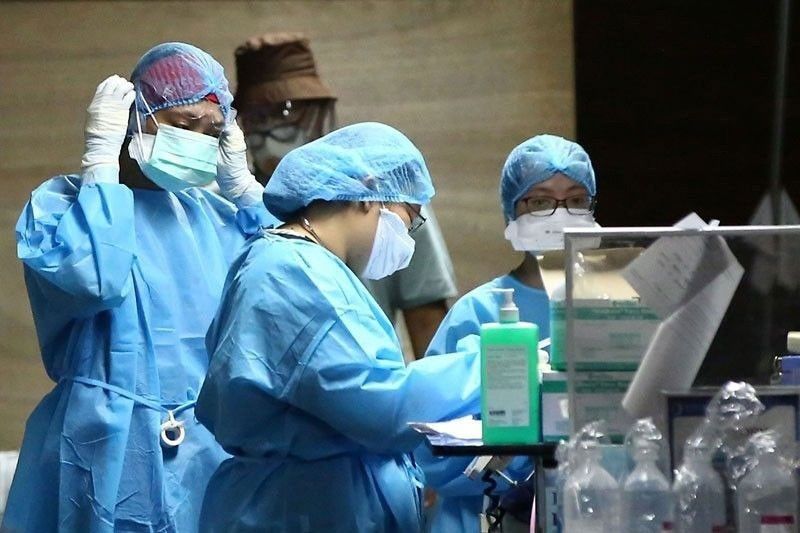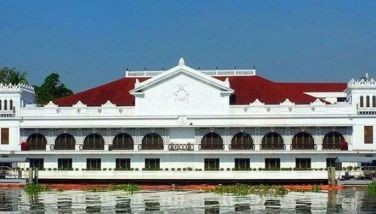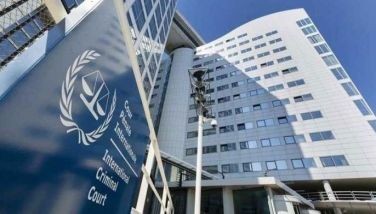Herbosa urged: Release HCW allowance

MANILA, Philippines — Health Secretary Teodoro Herbosa has been asked to help facilitate the release of the P12.5 billion in COVID allowance of health care workers (HCWs).
“We hope Secretary Ted, who is a long-timer in the health care sector, will deliver on his promise to look into the still unpaid COVID allowances and get to the bottom of the matter,” Camarines Sur Rep. LRay Villafuerte said.
Villafuerte said the Department of Budget and Management (DBM) claimed to have released the amount to the Department of Health (DOH) some months back, yet the beneficiaries, HCWs and non-HCWs, have yet to receive the allowance.
“We want to know soon enough when the DOH is going to release the balance of about P12.57 billion from the P19.96 billion in COVID benefits and allowances of HCWs and non-HCWs for the services rendered to our people,” Villafuerte said.
The World Health Organization has said that the global public health emergency is over.
On his first day as DOH chief on June 7, Herbosa was quoted as saying that he would immediately look into the issue of the unpaid benefits of HCWs and non-HCWs.
Taking up the cudgels for HCWs and non-HCWs, who claimed they have yet to receive their long-overdue allowances, Villafuerte earlier scored the delayed release of the benefits of about 20,000 HCWs.
Citing a United Private Hospital Unions of the Philippines (UPHUP) report, he said that 20,304 HCWs have not received their allowances and other benefits amounting P1.94 billion, which dates back to October 2021.
According to the UPHUP, the still-unpaid benefits of 20,304 HCWs amounted to P1.84 billion, comprising the One COVID Allowance (OCA) amounting to P985.6 million, P737.5 million in health emergency allowance (HEA), special risk allowance (SRA) amounting to 16.8 million, and meals, accommodation and transportation (MAT) benefits totaling P6.7 million.
Aside from the HCWs, the extra benefits cover front-liners who are non-health care workers, including those rendering medical, allied medical, administrative, technical and support services in hospitals, health facilities, laboratories, medical or temporary treatment and monitoring facilities and vaccination sites.
Reacting to this report, the DBM told journalists that the release of the allowances was not delayed.
Last month, the DBM claimed to have already released P19.96 billion to the DOH to pay for the public health emergency benefits and allowances of HCWs and non-HCWs, in accordance with Republic Acts 11469 and RA 11712.
It said that of the amount, the DOH has already utilized P7.39 billion as of March.
As this developed, the Alliance of Health Workers (AHW) said it is not convinced that a majority of the HCWs have already received the COVID benefits.
AHW president Robert Mendoza said there are those who might have received for a particular month and nothing followed after that.
The group was referring to Herbosa’s statement during a briefing at Malacañang wherein he reportedly said that 90 percent of the health benefits were already given to the health workers.
Meawhile, the DOH has been urged to study the possibility of allowing foreign doctors to practice in the country for a limited period to augment the shortage of local doctors, Sen. Francis Tolentino said.
Tolentino said the local medical industry would benefit from allowing foreign doctors to practice in the country, not only in terms of idea exchange, but also in technology transfer.
“There are doctors who are registered in other countries, who want to practice for a brief period here in our country and who are really specialists. They will be here for a while, but not to compete,” Tolentino said over radio dzRH.
As of December 2021, the DOH said there were 3.7 doctors for every 10,000 Filipinos.
The figure is short of the World Health Organization (WHO)’s recommended ratio of 10 doctors per 10,000 people.
Around 28 towns do not have doctors.
In the same radio program, Herbosa agreed with Tolentino’s observations.
Herbosa cited his worked experience as a visiting professor in a medical school in Malaysia, where his Philippine medical license and accreditation with the Philippine Medical Association were accepted.
“I submitted my license in the Philippines, my membership in the Philippine Medical Association and my curriculum vitae. They reviewed it, interviewed me and gave me a temporary license in a hospital at the Universiti Kebangsaan Malaysia,” Herbosa said.
Herbosa vowed to talk with the Professional Regulations Commission (PRC) on the possibility of relaxing the current licensing rules, to allow foreign doctors to temporarily practice in the Philippines.
Tolentino said there are plenty of doctors from overseas who have signified interest to conduct medical practice in the country, but the current protective policy prevents them from doing so. — Cecille Suerte Felipe, Rhodina Villanueva
- Latest
- Trending





























